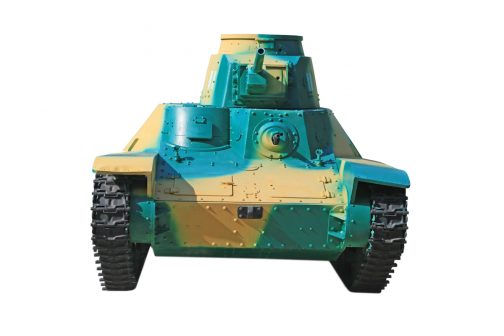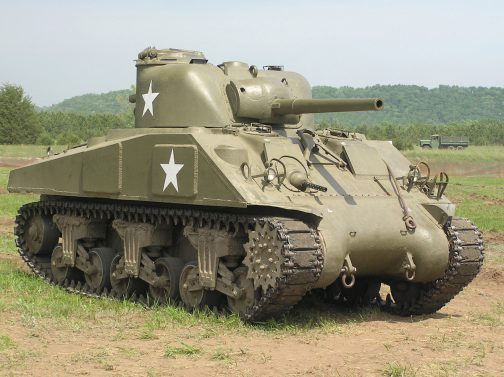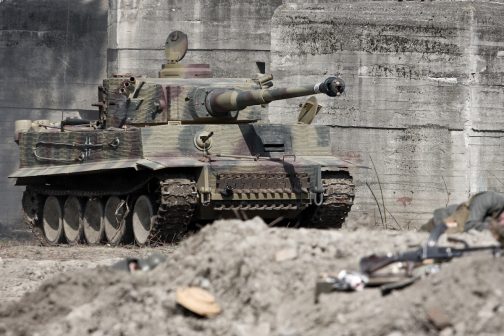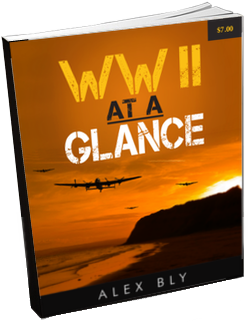In WW2 there were three types of tanks. They were light, medium and heavy tanks. Tanks were and still are generally rated on 3 main characteristics. They are speed and mobility, armor and armament. No tank is capable of reaching the maximum performance in any area. For example if a tank is too heavy it cannot be as fast as it could have been if some armor was removed and it weighed less.

Type 95 Ha-Go Japanese Light Tank
Light tanks are focused on speed and mobility. Therefore they have lighter armor making them low in weight and fast. They can also travel with less fuel than a large gas guzzler. Some examples of light tanks are the American M3 and M5 Stewart German Panzer 2, Soviet T-26 and Japanese type 95 ha-go. All of these tanks were mobile and able to move over tough terrain but had thin armor and a weaker main cannon. Weak anti tank weapons such as anti tank rifles were able to penetrate the armor of most light tanks. They were produced in less numbers than medium tanks but more than heavy tanks.

American Sherman Medium Tank
Medium tanks are in between light and heavy tanks in all the three main areas. They consume more fuel than light tanks but less than heavy tanks. The armor is also heavier than light tanks and weaker than heavy tanks. Some examples are the American M4 Sherman, German Panzer IV and Soviet T-34. They also have larger and more powerful guns than the light tanks but less strength than heavy tanks. Also the armor is thicker than light tanks but thinner than heavy tanks. Some weaker anti tank weapons like anti-tank rifles were useless against these tanks. American M3 37mm anti tank guns, German Pak 36 37mm anti tank guns, and the Soviet 53-k 45mm anti tank gun also didn’t have much luck against these vehicles unless they were used at very close ranges on the side armor. (almost all tanks, light medium or heavy have the thickest armor in the front). Medium tanks were produced in the largest number of any type of tanks.

Tiger l German Heavy Tank
Heavy tanks are all about armor and armament. The main cannon was usually so powerful it could penetrate almost any armor on the battlefield. The tanks armor was so thick that they would be immune to almost any anti-tank weapon from the front. These vehicles would consume large amounts of gas which was a main weakness of the vehicles. Sometimes these they would break down from mechanical failure because they were almost too advanced for the time. Some examples include the German Tiger and King Tiger. There were also the Soviet KV-1 and KV-2. The Soviets also had the IS-2 Stalin tank named of course after Soviet leader Joseph Stalin. Heavy tanks were produced in small numbers because of the cost and sophistication of these vehicles.
Light tanks would go on to make great use as reconnaissance later on in the war when they became to weak to go on to the battlefield and face medium or heavy tanks. They were still useful in the Pacific Theater until the end of the war because Japanese tanks even were not as heavily armored as their American and European rival tanks. Medium tanks would sometimes be upgraded with a better gun to deal with heavy tanks. Heavy tanks were generally the king of the battlefield and modifications in their role or characteristics did not change much.

